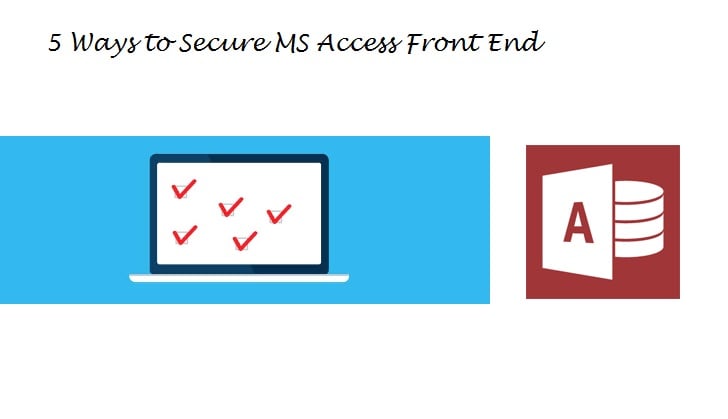In MS Access, despite encryption of underlying data, the passwords get stored in the front end in plain text and can be extracted. Learn 5 ways to secure the front end and avoid data breaches
When you are using an MS Access application for operating a line of business application, chances of a data breach is always there. Thus it is imperative that you ensure the security of the application. Now, most multiuser Access application are based on a split database model, wherein the Access front end is placed across different user machines while main data repository is stored on a different machine or backend. Quite expectedly, a majority of vulnerabilities arise from the front end interface deployed at user machines. To help you address such issues, we have listed 5 practical tips to secure MS Access front end.

1. Consider using a Custom Ribbon for the Front End interface
If you opt for creating a custom ribbon for your users, they would not be able to access Commands typically available on the standard ribbon interface. In other words, you would essentially restrict them to the minimum things that may need to operate the application, thus securing it.
2. Control the User access to the application
It makes great sense to control the user access to the application. In your database, try to keep a table containing names of all Window’s usernames that can use the application. When the application starts up on a client machine, ensure that it checks the network username and is matched with the records present. If the usernames do not match, ensure the application gets closed automatically.
3. By default always place a compiled version of Front end on client machines
By using a compiled version (like Accde), you can effectively lock down a variety of objects from being modified by users. Nor can users open up forms in design view, thus limiting their option to compromise the data, even unintentionally.
4. Consider disabling Special Keys and Shift Bypass
When you are looking to secure the front end, it makes immense sense to disable the shift bypass option. Similarly consider locking all special keys, especially the ones that bring out the VBE editor.
5. Use folder permissions effectively
MS Access stores data in flat files. Quite naturally you need to protect the folders hosting these files, including the one containing temporary files by applying the relevant permission controls.
Dealing with Situations beyond your control
Despite doing all that is possible to protect your MS Access data, you may still end up with a corrupt database file. In rare cases, the cause for Access corruption can be as insignificant as a logical error arising out of a failed update operation. Given that Access errors are going to happen at some point of time, the best way to protect your data involves getting hold of an accdb recovery tool like DataNumen Access Repair. Whenever you encounter a database crash, just use this powerful utility to get back your data in perfect shape, that too in quick time.
Author Introduction:
Vivian Stevens is a data recovery expert in DataNumen, Inc., which is the world leader in data recovery technologies, including sql repair and excel recovery software products. For more information visit www.datanumen.com